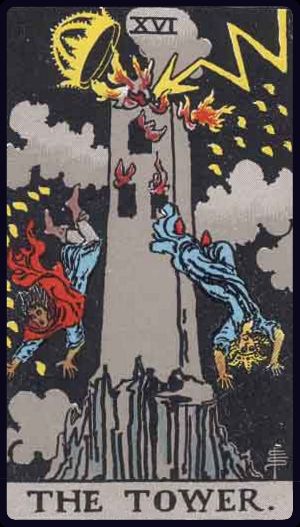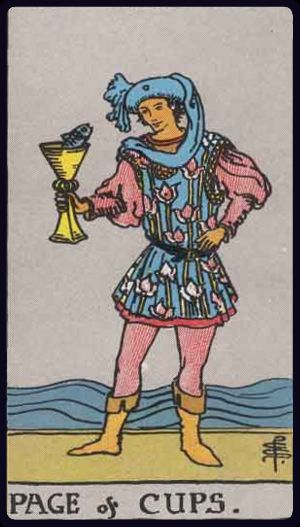Death
Words describing Death: Transformation, Endings, Rebirth, Change, Transition, Letting Go, Release, Renewal, Closure, Acceptance.
How to interpret Death in tarot
Past

The Tower (reversed)
Present

Page of Cups (upright)
Future

Death (upright)

The Basic Meaning of the Card (Rider-Waite)
Death is the thirteenth card in the Major Arcana of the tarot and symbolizes change, transformation, and the end of a cycle. Despite its name, the Death card rarely represents physical death. The card’s image shows a skeleton-rider on a white horse, which represents that change is inevitable and that we must accept and adapt to it.
Upright Meaning
When Death appears upright in a tarot reading, it means that it is time to let go of something, to end a cycle, and to move forward. The card symbolizes a time of transformation and change that can be painful or frightening but which also offers opportunity for personal growth and development. Accepting change and forgiving the past are important in order to move forward.
Reversed Meaning
If Death is reversed in a reading, it may indicate that you are unwilling to accept change or that you are clinging to the past. It may also suggest that you are having difficulty letting go of old patterns and that you need to confront and overcome fear or insecurity which is holding you back from moving forward. The card encourages you to confront and overcome what is holding you back in order to make room for new growth and transformation.
Example Interpretation
If Death appears in a reading alongside the Eight of Cups and the Three of Pentacles, it could be interpreted as an necessary change and transformation (Death) leading you to let go of something that no longer serves you (Eight of Cups) which will result in new collaborations, devotion, and success on the material plane (Three of Pentacles). It is important to embrace change and move forward towards new possibilities.
Psychological Interpretation
Archetypal Meanings
The Death card is one of the most misunderstood and feared cards in the tarot deck. However, it holds a powerful and transformative symbolism that goes beyond its literal meaning of physical death. In the tarot, Death is often depicted as a skeleton wielding a scythe, standing in front of a rising sun and a body lying on the ground. This imagery evokes a sense of finality and a reminder of our own mortality.
Archetypally, the Death card represents the end of a cycle, transformation, and rebirth. It is associated with the universal principle of change and the natural process of decay and renewal. It symbolizes the destruction of the old to make way for the new, the shedding of old patterns and beliefs, and the necessary endings that lead to new beginnings.
Behavioral Patterns
When the Death card appears in a reading, it can indicate a major change or transition in the querent’s life. This change can be physical, such as a job loss, a move, or a breakup, or it can be internal, such as a shift in mindset or belief system. The Death card can also represent the end of a relationship or the death of a loved one.
Psychologically, the Death card can indicate a period of letting go and surrendering to the natural flow of life. It can also suggest the need to confront and release any unhealthy patterns or attachments that are holding the querent back from growth and transformation. This card can be a reminder to embrace change and not resist it, as resistance can lead to suffering and stagnation.
Integration and Shadow Work
Working with the energies of the Death card can be challenging, as it represents endings and loss. However, it is an essential part of the human experience and can lead to personal growth and transformation. To integrate the lessons of this card, one must be willing to confront their fears and attachments and let go of what no longer serves them.
Shadow work is an important part of the integration process with the Death card. It involves acknowledging and accepting the parts of ourselves that we may consider undesirable or negative. The Death card reminds us that these parts are necessary for growth and that by embracing them, we can move forward into a new and better version of ourselves.
In conclusion, the Death card in the tarot is a powerful symbol of transformation, change, and renewal. Its appearance in a reading can be unsettling, but it is a reminder that endings are necessary for new beginnings. By embracing the energies of this card, one can undergo personal growth and transformation and ultimately, find peace and acceptance in the face of change and loss.

